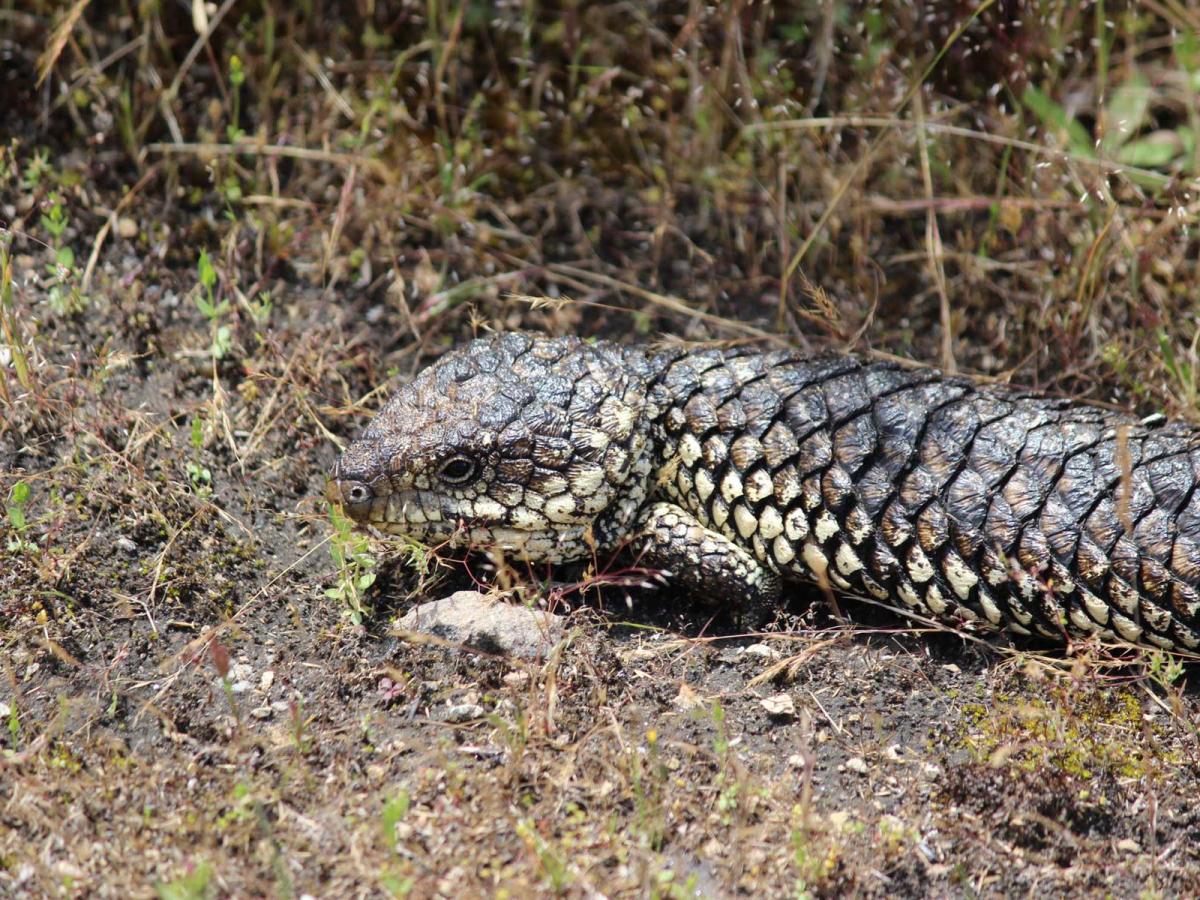The University of Adelaide's Wildlife Crime Research Hub is pioneering efforts to combat wildlife trafficking in Australia, hosting the inaugural Wildlife Crime in our Backyard showcase at the Adelaide Zoo this month.

A shingleback lizard. Credit Sebastian Chekunov.
Delivered in partnership with Adelaide Zoo, and with contributions from industry partners, the showcase is Australia's foremost public exhibition on wildlife and environmental crime - the fourth largest transnational organised crime type globally.
Alongside research-driven infographics from the Wildlife Crime Research Hub, the showcase will feature photography from 2021 Wildlife Photographer of the Year for photojournalism, Adam Oswell; exhibits from partners including Crime Stoppers SA, Cleland Wildlife Park, Taronga Zoo and Adelaide Zoo; and finalists of the youth art for conservation competition, Wildvoice.
Wildlife Crime Research Hub scientists will also be available at the showcase to discuss the impact and dangers of wildlife trafficking in Australia and around the world.
"The showcase is an opportunity for the South Australian public to gain insight into the illicit activities and behaviours that threaten our amazing fauna and flora and unique Australian environments," says Wildlife Crime Research Hub Manager, Katie Smith.
The showcase is being presented alongside Crime Stoppers SA's 'See it. Say it. Call it out.' campaign to encourage the community to report suspicious environmental behaviour.
"South Australia is leading the delivery of research innovation and on-ground action to combat illegal wildlife trade, and the showcase will help the public engage in these efforts," Ms Smith says.
Illegal wildlife trade is estimated to be worth around AU$32 billion globally.
"Whilst many people believe wildlife and environmental crime happens solely overseas, animal and plant trafficking also occurs in Australia," says Director of the Wildlife Crime Research Hub, Professor Phill Cassey.
"Australia has some of the world's most distinctive and unique flora and fauna, and many species of parrots, reptiles, and even plants and invertebrates are highly desirable for exotic pet keeping and horticulture. Some species, like the shingleback lizard, are seized leaving the country by the hundreds every year, and new species are emerging illegally in overseas markets all the time.
"The illegal wildlife trade is a lot more than just elephant ivory and rhinoceros horn, and many offenders still consider wildlife trafficking to be a low-risk, high-reward smuggling type. Events like this showcase can help educate the public and increase awareness and pressure for more consistent and greater penalties to deter illegal wildlife trade increasing in Australia."
Currently growing at a rate 2-3 times faster than the global economy, wildlife and environmental crime poses a serious threat to animal and human wellbeing, environmental security and economic health in Australia.
"Public education and empowerment play a key part in safeguarding native Australian species from national and international trafficking," says Mark Smith, Conservation Manager at Zoos SA.
"Wildlife trafficking threatens native wildlife, damages ecosystems, and impacts communities. As a not-for-profit conservation charity committed to saving species from extinction, Zoos SA is proud to shine a light on this abhorrent practice and the vital global efforts to stop it.
"We're pleased to support the great work done by the Wildlife Crime Research Hub and Crime Stoppers SA, local heroes who are helping to protect our precious native species.
"We encourage the community to come along to Adelaide Zoo to visit the showcase and learn more about the frontline work being done to detect, disrupt, and prevent wildlife crime."






